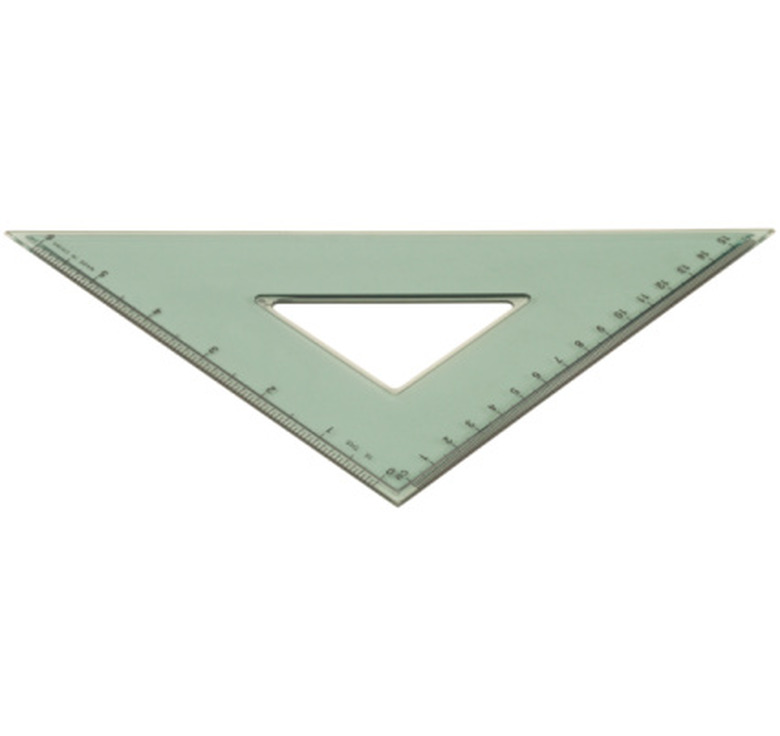Interesting Facts About Triangles In Math
A triangle is a three-sided polygon that has three vertices, or corners. Triangles are commonly used in construction to create supporting structures and figure heavily in artworks. Many students learn all about triangles in their mathematics classes, including geometry and trigonometry. By learning everything there is to know about triangles, you can improve your mathematical skills so you can solve more complex math problems.
Types
Types
There are three types of triangles: equilateral, isosceles and scalene. The equilateral triangle has three sides that are all equal in length. The angles formed where sides of the triangle meet are all equal to 60 degrees. The isosceles triangle has two congruent sides, and two of its angles are also equal. The scalene triangle, which is the most common type of triangle, has no equal sides or angles.
Angles
Angles
The sum of every triangle's internal angles is equal to 180 degrees. If you know the measurement of two of a triangle's angles, you can find the unknown angle by subtracting the sum of the two known angles from 180. Any angle that is below 90 degrees is called an acute angle, and any angle that measures more than 90 degrees is called an obtuse angle.
Right Triangles
Right Triangles
A right triangle is any triangle that contains a 90-degree angle. In many math books, the 90-degree angle of a right triangle will be marked with an image of a square, making it easy for you to recognize this type of triangle. The longest side of the triangle is called the hypotenuse. If you know the lengths of any two sides of a right triangle, you can find the length of the unknown side by using the equation a^2 + b^2 = c^2, where "c" is the length of the hypotenuse and "a" and "b" are the lengths of the other two sides.
Complex Polygons
Complex Polygons
Any polygon, such as a square, octagon or pentagon, can be divided into a series of triangles. Dividing a complex shape, such as an octagon or pentagon, into a series of triangles allows you to calculate the area of that shape more easily when you know the length of at least one of the sides. To find the area of the complex shape, calculate the areas of the triangles and find the sum of the triangles' areas. The area of a triangle is equal to half the length of the base multiplied by its height.
Cite This Article
MLA
Dhillon, Rupinder. "Interesting Facts About Triangles In Math" sciencing.com, https://www.sciencing.com/interesting-triangles-math-8629955/. 24 April 2017.
APA
Dhillon, Rupinder. (2017, April 24). Interesting Facts About Triangles In Math. sciencing.com. Retrieved from https://www.sciencing.com/interesting-triangles-math-8629955/
Chicago
Dhillon, Rupinder. Interesting Facts About Triangles In Math last modified August 30, 2022. https://www.sciencing.com/interesting-triangles-math-8629955/
